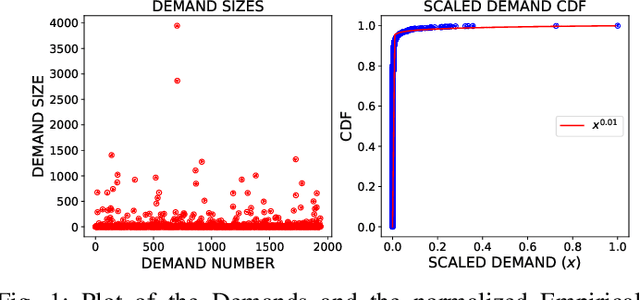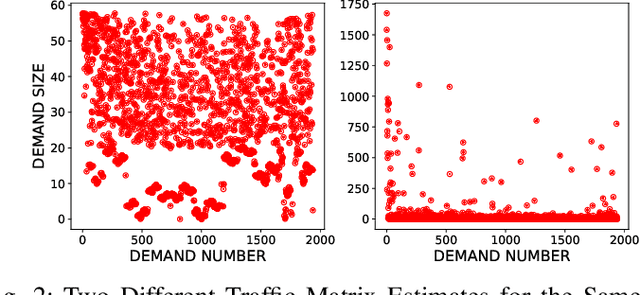T. V. Lakshman
Learning Based Methods for Traffic Matrix Estimation from Link Measurements
Aug 03, 2020



Abstract:Network traffic demand matrix is a critical input for capacity planning, anomaly detection and many other network management related tasks. The demand matrix is often computed from link load measurements. The traffic matrix (TM) estimation problem is the determination of the traffic demand matrix from link load measurements. The relationship between the link loads and the traffic matrix that generated the link load can be modeled as an under-determined linear system and has multiple feasible solutions. Therefore, prior knowledge of the traffic demand pattern has to be used in order to find a potentially feasible demand matrix. In this paper, we consider the TM estimation problem where we have information about the distribution of the demand sizes. This information can be obtained from the analysis of a few traffic matrices measured in the past or from operator experience. We develop an iterative projection based algorithm for the solution of this problem. If large number of past traffic matrices are accessible, we propose a Generative Adversarial Network (GAN) based approach for solving the problem. We compare the strengths of the two approaches and evaluate their performance for several networks using varying amounts of past data.
Tomography Based Learning for Load Distribution through Opaque Networks
Jul 18, 2020



Abstract:Applications such as virtual reality and online gaming require low delays for acceptable user experience. A key task for over-the-top (OTT) service providers who provide these applications is sending traffic through the networks to minimize delays. OTT traffic is typically generated from multiple data centers which are multi-homed to several network ingresses. However, information about the path characteristics of the underlying network from the ingresses to destinations is not explicitly available to OTT services. These can only be inferred from external probing. In this paper, we combine network tomography with machine learning to minimize delays. We consider this problem in a general setting where traffic sources can choose a set of ingresses through which their traffic enter a black box network. The problem in this setting can be viewed as a reinforcement learning problem with constraints on a continuous action space, which to the best of our knowledge have not been investigated by the machine learning community. Key technical challenges to solving this problem include the high dimensionality of the problem and handling constraints that are intrinsic to networks. Evaluation results show that our methods achieve up to 60% delay reductions in comparison to standard heuristics. Moreover, the methods we develop can be used in a centralized manner or in a distributed manner by multiple independent agents.
 Add to Chrome
Add to Chrome Add to Firefox
Add to Firefox Add to Edge
Add to Edge